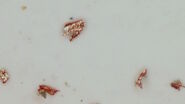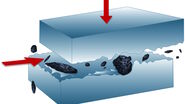Introduction
Particulate contamination on automotive parts and electronic components can have a serious effect on their performance and lifetime. If critical components are sufficiently contaminated, there can be a dramatic failure of the vehicle or device system. As a result, cleanliness analysis in terms of determining the particle dimensions and material properties is very important for modern manufacturing and production in terms of quality assurance. To help users with decision making when choosing a cleanliness analysis solution which best meets their needs, the main factors to consider are discussed below.
Key Learnings
With the goal of selecting a cleanliness analysis solution which best meets the needs of the user, it is important that the following factors are considered:
- Whether the cleanliness validation is for production and assembly of parts and components or for fluids
- The particle size range to be analyzed
- If determining the potential of particles to cause damage is useful
- If finding and eliminating the source of particulate contamination is a requirement
Each of these factors are clarified in this article to help users find the optimal cleanliness analysis solution. Users can perform efficient and accurate cleanliness analysis with Leica solutions based on optical microscopy and laser induced breakdown spectroscopy (LIBS).





